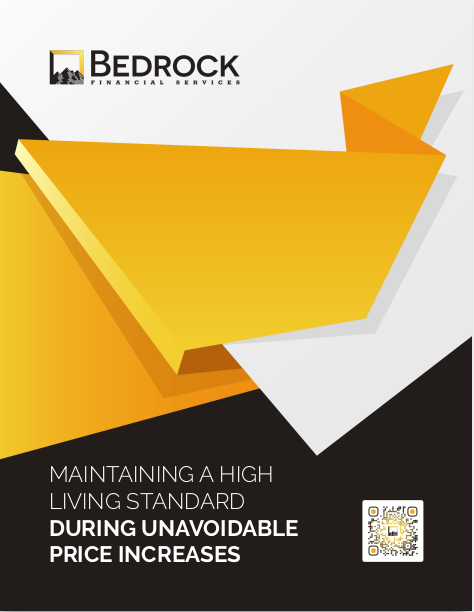Key Takeaways
-
You don’t need hundreds of clients to build a powerful testimonial engine—just the right system and timing.
-
Strong testimonials don’t happen by chance; they come from intentional questions, consistency, and showcasing real results.
The Power of Testimonials in 2025
In a world flooded with options, trust is currency. And in 2025, few tools build that trust better than authentic, well-positioned testimonials. Prospects expect proof—proof that your advice delivers results, that your communication is consistent, and that you understand their financial goals. Testimonials give them that proof in your clients’ own words.
But getting those testimonials—and getting the right ones—requires more than just doing good work. You need a repeatable system that turns client satisfaction into a brand asset that keeps working long after the meeting ends.
Why Your Brand Needs a Testimonial System
If you’re only collecting testimonials occasionally or passively, you’re missing out on the compounding effect. A systemized approach turns each happy client into a brand ambassador. Done correctly, their words become your most persuasive marketing content—on your website, social media, email campaigns, and in-person meetings.
Here’s what a testimonial machine offers:
-
Social proof at scale
-
Content for every marketing channel
-
Higher conversion on digital assets
-
Stronger client retention through engagement
Timing Is Everything
The best testimonials aren’t just positive—they’re emotional, specific, and fresh. And that means timing matters.
Here’s how to time your testimonial requests:
-
Immediately after a big win: Just helped a client hit a major financial milestone? That’s when emotions are high and memories are clear.
-
During your review meeting: Clients are reflecting on progress—this is a prime time to ask.
-
In post-onboarding follow-ups: After the first 60–90 days, clients often feel supported and impressed. Strike while it’s new.
Never wait until year-end. By then, enthusiasm fades and responses become generic.
What to Ask to Get Gold
Vague questions get vague answers. If you want testimonials that truly differentiate you, ask the right questions:
-
*”What made you decide to work with me?”
-
*”What was your biggest concern before working together—and how do you feel now?”
-
*”What specific result or experience has stood out to you so far?”
-
*”If you were talking to someone considering this service, what would you tell them?”
These questions tap into emotion, transformation, and clarity—all of which turn testimonials into tools of persuasion.
Make It Easy for Clients to Say Yes
Most clients are happy to give a testimonial, but they need structure and simplicity.
Here’s how to lower the friction:
-
Provide a short form with 3–5 pre-written questions
-
Offer multiple formats: written, video, or audio
-
Give a gentle nudge: frame it as a favor that helps others like them
-
Offer a draft they can approve if they’re time-strapped
Make the process simple, and more clients will say yes.
Where and How to Use Testimonials
Once you have a bank of strong testimonials, the next step is strategic deployment. Don’t just let them sit in a folder—make them visible and active across your client journey.
Use them in:
-
Website landing pages: Place testimonials near your call-to-action
-
Email sequences: Reinforce trust during the nurturing phase
-
Sales presentations: Especially for high-net-worth prospects or business owners
-
Social media: Turn testimonials into quote cards, reels, or stories
The more often clients and prospects see proof of your value, the faster they’ll trust your expertise.
Keep It Fresh and Current
A testimonial from three years ago might be accurate—but it feels dated. Keep your testimonial library current by setting a review cadence.
Best practices:
-
Refresh annually: Rotate in new testimonials at least once a year
-
Categorize by service: Retirement planning, risk management, tax strategy, etc.
-
Tag by audience: Business owners, pre-retirees, federal employees, etc.
This allows you to match the right testimonial to the right prospect—boosting relevance and resonance.
Automate the Follow-Up
You’re busy. Your team is busy. So don’t leave testimonial collection to chance.
In 2025, automation tools let you:
-
Schedule testimonial requests after key meetings
-
Trigger reminder emails if clients don’t respond in 7 days
-
Organize and tag testimonials in your CRM
Even if you’re a solo advisor, you can set up simple workflows that turn happy clients into brand assets on autopilot.
Legal and Ethical Considerations
Financial professionals must follow compliance rules when using testimonials. In 2025, regulations continue to evolve, especially after the SEC’s updates to the Marketing Rule.
Here’s what you need to keep in mind:
-
Get written permission before publishing any testimonial
-
Avoid misleading claims—clients can’t promise guaranteed results
-
Disclose material relationships if applicable
-
Keep testimonials factual and client-specific
Always run testimonials through your compliance team or follow your firm’s marketing guidelines.
The Compound Effect of Consistency
Collecting one great testimonial is good. Creating a steady flow of them is game-changing. Over time, your marketing becomes infused with authentic validation, and your reputation compounds with each new piece of feedback.
It’s no longer about proving yourself from scratch with every new lead—your testimonial machine does the talking.
From Feedback to Marketing Asset
The real win happens when you treat testimonials as more than just feedback. They’re reusable, evergreen marketing assets that tell the story of your brand through the eyes of your clients.
Here’s how to maximize each one:
-
Create quote graphics for social media
-
Add them to your email signature
-
Incorporate into appointment confirmations
-
Use in webinars and workshops
Repurpose smartly and frequently.
Build a Process, Not a Project
Turning happy clients into testimonial-generators shouldn’t be a once-a-year task. It should be built into your client experience.
Create a structure like:
-
At onboarding: Explain how their feedback helps others
-
At 90 days: Send first testimonial request
-
At 6 months: Request updated reflection
-
Annually: Invite clients to update or expand their testimonial
The key is consistency, not volume. You don’t need hundreds—just the right voices at the right times.
What Happens When You Get This Right
When you have a strong testimonial engine in place, three things happen:
-
You close more clients faster, because they see themselves in the stories you share
-
You increase retention, because clients feel heard, appreciated, and engaged
-
You reduce marketing costs, because your own clients do the marketing for you
And in 2025’s competitive environment, that kind of leverage is rare—and valuable.
Make Testimonials Part of Your Brand Strategy
Don’t treat testimonials as decoration. Treat them as core marketing assets that support every phase of the client journey—from awareness and trust-building to conversion and retention.
When you systemize the process, customize your questions, and amplify your clients’ voices, your brand becomes more human, more trustworthy, and more memorable.
Start Turning Feedback Into Fuel
If you’re ready to build a testimonial machine that runs 24/7, you don’t have to do it alone. At Bedrock Financial Services, we help professionals like you integrate testimonial strategies into automated campaigns, client onboarding, and retention funnels.
We provide the tools, training, and marketing assets to help you scale your brand with the voices of your happiest clients.
Sign up with us today and turn your clients’ words into your most persuasive marketing engine.







